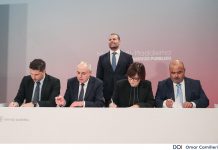This addendum report complements the first part of the audit of matters relating to the concession awarded to Vitals Global Healthcare Ltd by the government. The focus of this publication is a memorandum of understanding (MoU) submitted to the National Audit Office (NAO) by the Office of the Prime Minister shortly after the publication of the aforementioned report.
Representing the government in this MoU was Dr Christian Cardona, then Minister for the Economy, Investment and Small Business. The other party to the MoU were the developers and operators of the proposed project, represented by Mr Mark Edward Pawley in his capacity as Director of Bluestone Special Situation 4 Ltd, Dr Ashok Rattehalli in his capacity as Director of AGMC Incorporated, and Mr Mohammad Shoaib Walajahi and Mr Chaudhry Shaukat Ali in their capacity as Directors of Pivot Holdings Ltd (collectively referred to as the Investors). Acknowledged in the MoU was that the Investors were interested in investing in the setting up of a Gozo Medical Complex, which comprised the extension and operation of the Gozo General Hospital, the construction and operation of an assisted living centre, as well as the construction of a medical school to be operated by Barts School of Medicine and Dentistry. The MoU was dated 10 October 2014.
Having reviewed this MoU, the NAO affirms that all findings and conclusions reached in its initial report remain unchanged, with concerns highlighted therein substantiated by the facts brought to the fore.
The NAO is of the opinion that the MoU entered into by the government and the Investors and the subsequently issued Request for Proposals relating to the concession of three public hospitals can be considered as one process. First, there exists significant overlap between the Investors that entered into the MoU with the government and the owners of Vitals Global Healthcare Ltd that the government subsequently awarded the concession to. Second, the nature of the project remained unchanged as the refurbish and operate model was retained, revenue by the government always guaranteed in the envisaged long-term agreements, medical tourism underpinned feasibility, and the construction of Barts Medical School a central requirement throughout. The only major difference was the reduction in the intended number of beds at the Gozo General Hospital, which reduction was more than compensated for through the inclusion of St Luke’s Hospital and Karin Grech Rehabilitation Hospital. The overlap in terms of the nature of the project and the identity of the Investors is evident and strongly supports this Office’s understanding of a process that was staged and deceitful.
Although the MoU provided an insight into certain developments that took place prior to the Request for Proposals, multiple gaps persist. Most notable of which related to the identification of the Investors, the negotiations held leading to the MoU and the negative outcome of the due diligence undertaken by Malta Enterprise with respect to the Investors. Despite the lack of visibility afforded to this Office regarding the nature of the negative outcome of the due diligence, the NAO’s concerns emerge when one considers that, irrespective of the critical risks flagged, the government persisted in negotiations with investors that, for the most part, remained unchanged when granting a concession to operate three public hospitals a few months later.
This addendum may be accessed by visiting the NAO website www.nao.gov.mt or through the Office’s social media.










